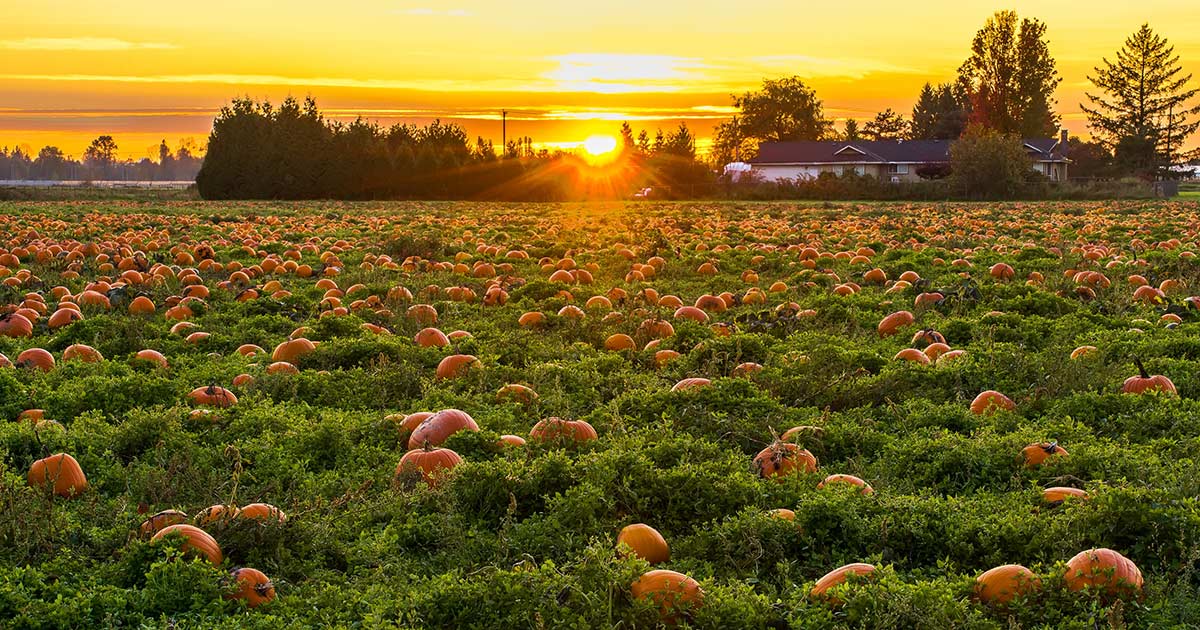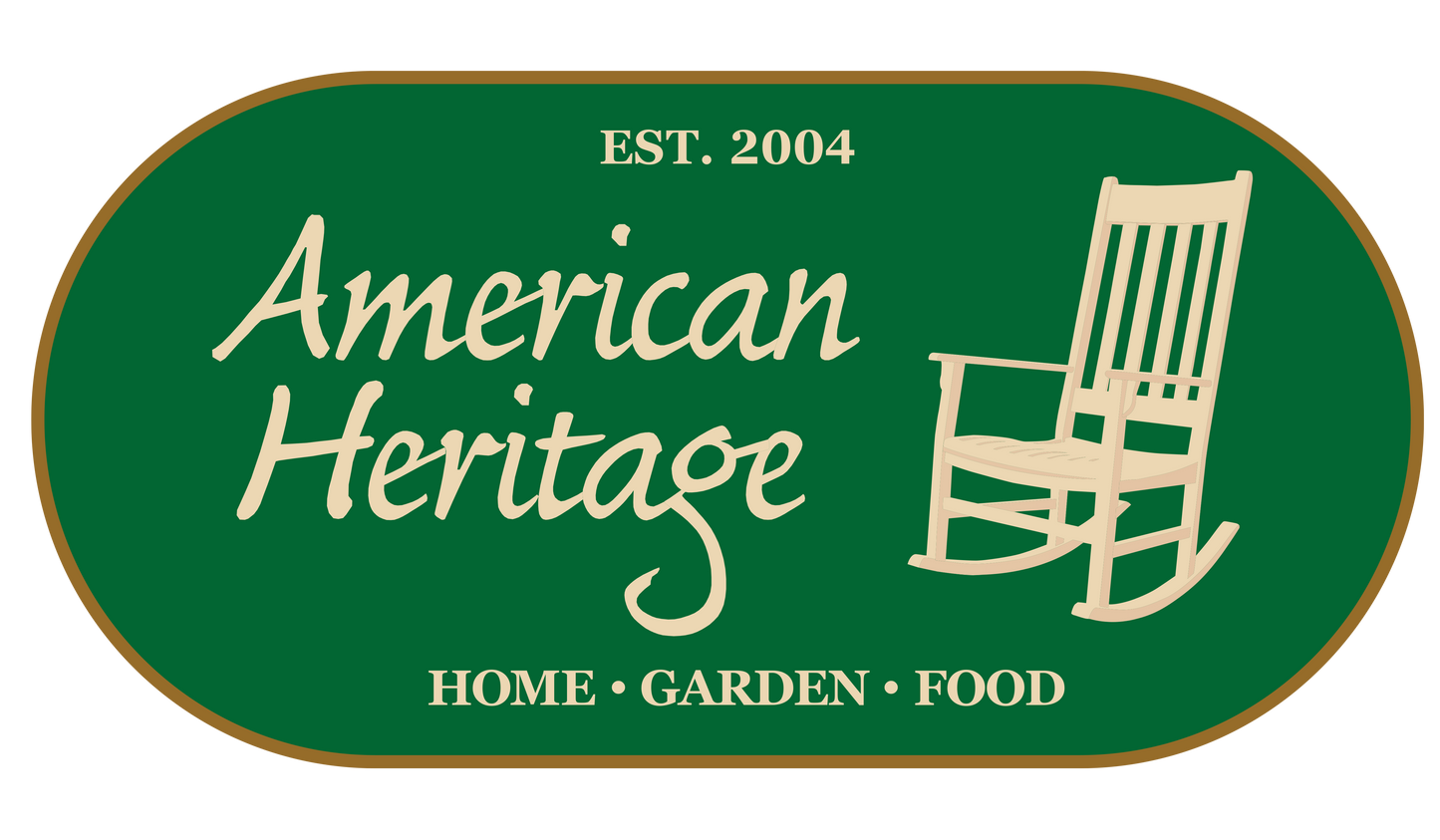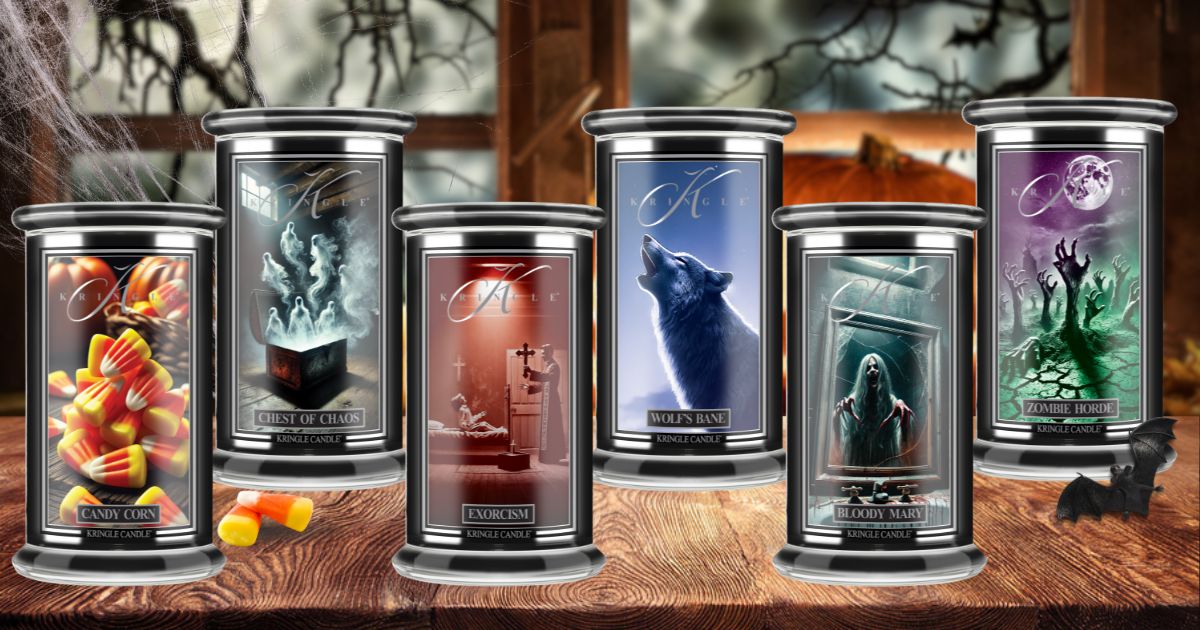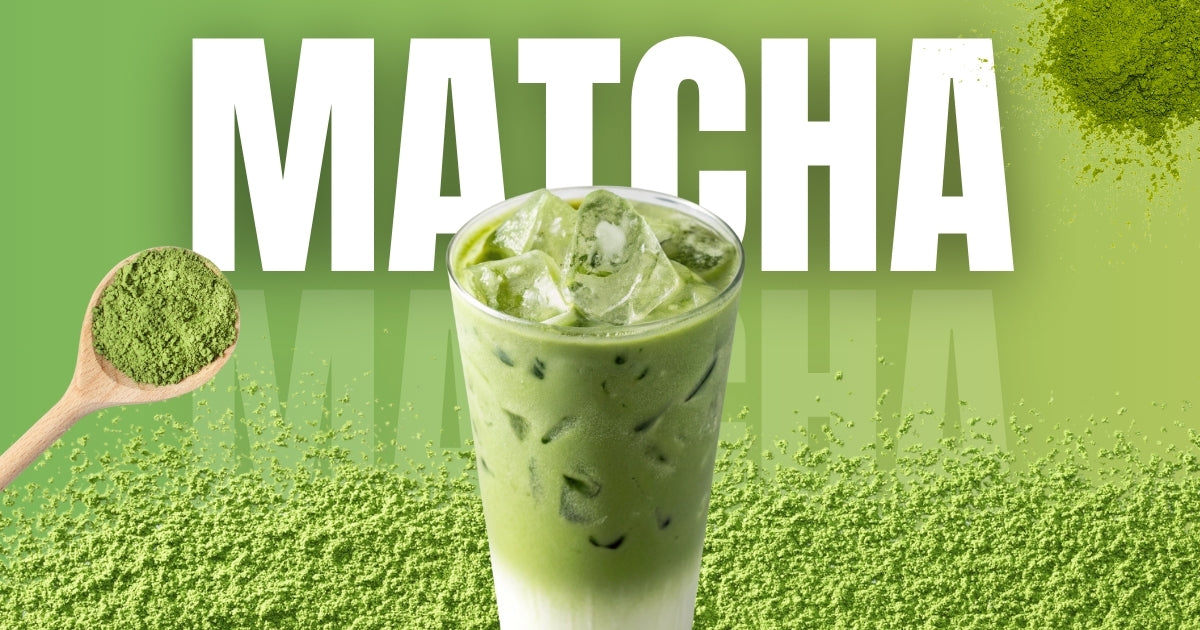
It's October and that means pumpkin time.
Whether with nasty faces outside on the veranda or pureed in the oven at home – Pumpkins are simply a part of October . But what seems so natural to us today required meticulous scheduling, laborious manual labor, and, above all, a whole lot of coincidence over many generations.
But why is the pumpkin so synonymous with autumn in general and October in particular? Why does anyone bother scary faces into his thick skin? And why is there a World record in pumpkin boat rowing ?
Come with us on an exciting journey in the footsteps of probably the world's largest berry , from its endangered roots to its current triumph around (almost) the entire world. And at the end, a little refreshment .
The pumpkin = the berry in the zucchini fur?
Pumpkins were first scientifically described in 1584 by French explorer Jacques Cartier on an expedition through America. Although the Frenchman initially had no idea what kind of fruit it was, he surprisingly managed to give the pumpkin a very fitting name: "Gros Melons."
Because pumpkins actually belong to the family of Cucurbitaceae , which has its German name “Cucurbitaceae” actually also owes to the relatively late discovered member, together with Cucumbers, zucchini and also Melons . The latter have long been known in Europe, having been cultivated in ancient times in North Africa and Southern Europe, such as Greece.
In many ways, we owe our current name to the modern Greeks, as they literally translated Cartier's "Great Melons" into the Greek "pepon." From there, the fruit first entered the English language as "pompion."
The modern English word “pumpkin” was actually first mentioned in the 17th century in a version of a source now known worldwide through Disney and the Brothers Grimm: Cinderella , even though this story today has little to do with its centuries-old Greek roots, in which there was no trace of stepmothers, good fairies or pumpkins.
In fact, pumpkins are not only related to melons and the like, but, as the attentive reader may have already noticed, not a vegetable but a fruit . Botanically speaking, pumpkins are not just fruits but very special a form of berry . This may sound surprising, but just like berries, only a single fruit grows from each pumpkin blossom. Of course, this definition doesn't just apply to pumpkins; other supposed vegetables are also, strictly speaking, berries, e.g. tomatoes , Eggplants and of course Melons & Co.
By the way, this also means that our sweet darlings Strawberries and raspberries are not technically berries.
Pumpkin varieties - from the bees and flowers
Although the pumpkin has been known in Europe for several hundred years, its history stretches far back into the past. The plant originates in Central America , where there is evidence of the active cultivation of pumpkins dating back to 7,000 BC go back.
In fact, without this active cultivation by humans, the fruit would probably became extinct thousands of years ago , because it has a number of characteristics that make it extremely unsuitable for independent survival in the environmental conditions that prevail today in its area of origin and would probably never have allowed the pumpkin to begin its current worldwide triumph.
Like many other plants, pumpkins are no self-pollinators and need other species, such as insects or birds, to carry pollen from one plant to another and to reproduce. In their area of origin, there was a specially adapted species of bee, the so-called Squash Bees . Honey bees can now also take on this role, but these species (as readers of our Apple blogs (As you may already know) are not native to America and only arrived in the New World with European settlers. Until the arrival of honeybees, the only alternative to squash bees in North America were the few native bumblebee species. bumblebees However, even though they love the nectar of pumpkin blossoms, they are known to actively avoid their pollen. There have even been documented cases of bumblebees that came into contact with pumpkin pollen actively rubbing it off leaves before flying on. There are good reasons for this. Pumpkin pollen is comparatively large and heavy, often too heavy for smaller bumblebee species, and can cause damage to the bumblebees' digestive tract. So bumblebees and pumpkins don't go well together. In places without their own populations, even today, instead of the busy bees, the equally hard-working people have to pollinate each pumpkin blossom individually by hand.
In addition to pollen, pumpkins also have another size problem. Even though original pumpkins are nowhere near the monsters cultivated today (more on this later), pumpkins are relatively large fruits and have a very stable shell . The reason for this is that in Central America it is found together with the local megafauna They were a delicacy for really large mammals like Mammoths . The pachyderms ate the fruits, digested them on their long foraging journeys and deposited the remains, along with the up to 500 undigested seeds per pumpkin, elsewhere, just as birds do for most, but much smaller berries here. Extinction of megafauna At the end of the last ice age, the fruits were simply too big or too hard to be attractive to the now smaller herbivores and thus the pumpkin only had one real chance of survival: the industrious man who fortunately made it across the land bridge of the Bering Strait to America during the Ice Age.
Today, the pumpkin fortunately no longer needs to worry. Humans have gradually brought it with them into almost all corners of the earth and today the fruit is cultivated on all continents, with the exception of Antarctica . Over the centuries, different consumer preferences and different climatic conditions have resulted in the creation of five basic species more than 70 different variations , each with its own size, shape and color.
Some of these forms are world-famous, such as the blue “Kabocha” or Hokkaido pumpkin from Japan, the appropriately named “ White Ghost ” (attention spooky) or the “ Cinderella ”, named after the pumpkin from the world-famous Disney film of the same name because of its slightly squat shape. As is often the case, however, not everything contains pumpkin just because it says so. The well-known Snake gourd for example, is actually not a pumpkin at all and rightly has the much more fitting, albeit less attractive, second name of club courgette.
Other variations, however, are more quirky and unique, such as the “ Pumpkinstein ”, a pumpkin in the iconic shape of the head of Frankenstein's Monster , as known from the classic 1931 film adaptation with Boris Karloff in the role of the reanimated monster. To breed this work of art, it was necessary to methodically cross-breed a total of 27 different pumpkin varieties in countless attempts over a period of four years. The cost of the venture is said to have been over $400,000 .
The pumpkin – a survivor
Now we have so often the Thickness of the pumpkin skin shouted at, it should come as no surprise to most people that pumpkins surprisingly durable Fruits are. An uncut pumpkin can, depending on storage, preferably in dark and cool conditions, up to 3 months can be stored without any problems. However, if the natural protection of the thick shell is broken, pumpkins are just as susceptible to environmental influences as any other fruit and should be eaten within one week to a maximum of 10 days before the inner flesh begins to go bad.
A historical example of the impressive longevity of pumpkins is a well-documented prank from 1997 . One night, unknown people placed a pumpkin on the Top of the McGraw Tower at Cornell University in Ithaca, New York – at a height of 52.7m without scaffolding or similar protective measures. The pumpkin was soon discovered and largely ignored, as it was assumed that the problem would quickly disappear on its own. To everyone's surprise, this was not the case. The campus residents were soon so Longevity of the object so impressed that there were even rumors that it was something completely different. Only students from the same faculty finally provided evidence when they misused weather balloon They took samples and analyzed them. The result was unequivocal:
It was actually a pumpkin.
Naturally aided by the cool New York climate, the lonely pumpkin on the top of the tower managed to survive for several months throughout the winter and became a cult object. Even your own webcam was temporarily set up so that fans could take a look at the condition of the fruit at any time of day or night.
In the end, however, the pumpkin had to be removed for health reasons, even though the event turned out completely differently than those responsible had hoped. In the spring of 1998, when the President of the University was just getting ready to be hoisted onto the roof of the tower to remove the sensation himself, a gust of wind the basket of the waiting crane, which was thankfully still empty at the time. It crashed into the fortunately undamaged tower, but the vibrations were enough to dislodge the pumpkin, which fell a good distance and landed on the attached scaffolding – still intact enough to be collected without making a big mess.
The pumpkin - a real treat, not a trick
Pumpkins are not only easy to store for a long time, they are also extremely versatile and healthy. While the sweet flesh is undoubtedly the most consumed part of the plant, theoretically, every part of the plant is completely edible – even the stems. The bright yellow ones are particularly delicious. Flowers . There are various ways of preparing them, but most often the flowers are washed, breaded, and then fried or baked in oil. Gourmets like to stuff the flowers before breading. with goat cheese or similar dairy products and transform the delicious side dish into a meal in its own right.
In addition, pumpkins also have a whole range of health-promoting substances and properties , so much so that they are even used in medicine and science to produce new substances for the treatment of inflammation, cancer, cardiovascular diseases, and diabetes. Pumpkins are also a helpful health boost for our everyday lives. pumpkin seeds for example, is associated with a lower risk of prostate problems. Not surprisingly, the well-known orange peel of the pumpkin contains Beta-carotene , the same substance found in carrots and other vegetables. Although the popular belief that eating carrots etc. helps us see in the dark has since been disproved, beta-carotene has other important functions. Our body uses it, for example, to Production of vitamin A , an important substance for our skin and our eyes (although, as already mentioned, it doesn't magically give us night vision) and a helpful supporter of the immune system.
Additionally, pumpkins contain lots of potassium . Potassium supports hearing, and it is even suspected that the natural decline in potassium levels with age is a major reason for our increasingly impaired hearing. And contrary to popular belief, pumpkin even beats the often praised Banana . One cup of pumpkin pulp provides 14% of your daily potassium needs. A whole banana, on the other hand, provides just 12%.
Also for diets Pumpkins are a great choice. Since they consist of 90% water, their flesh is very low in calories yet filling.
At the time of the Native Americans and later the first settlers, pumpkin was even considered an effective Remedy for snakebites . However, this property, based on the plant's anti-inflammatory properties, probably belongs more to the realm of placebo effects.
Pumpkin Pie – Oven-baked pumpkin
It is often said that Apple Pie is the undisputed Soul food of the Americans . However, this podium position is not entirely without competition. While a full 19% of Americans still say that they prefer to fill their pie with apples, it is only slightly behind Second place with 13% The pumpkin pie is already a popular dish. Of course, we are talking about the modern version of the pumpkin pie with delicious pumpkin puree in the typical American pie crust. However, Americans did not always enjoy their pumpkin pie this way. oldest traditional recipes From the colonial era, however, seem quite bizarre in light of our current understanding of pie. The pumpkin pie was actually more of a pumpkin than a pie in its beginnings, namely a hollowed-out pumpkin filled with milk, honey, and a mixture of spices, and then baked. The modern version of the pumpkin pie actually appears in American cookbooks. only in the 19th century , i.e. only after the country's independence from British colonial rule.
Unlike the rather symbolic patriotic apple pie, the pumpkin pie is actually an original American recipe and not a variation of centuries-old European cooking, as is the case with apple pie.
If you want to try the alternative to the classic Apple Pie, we have everything you need right here in our webshop :
- Pumpkin puree - Pumpkin in a can from Farmers Market
- Pumpkin Pie Spice Seasoning from American Heritage
- Deep glass pie dish from Anchor Hocking
For the gourmet or the hobby baker, it should be noted that pumpkins themselves have a relatively mild and weak taste To achieve the typical pumpkin pie taste, its natural flavors must be Addition of spices as the first settlers did in their milk and honey mixture before putting the pumpkin in the oven. The traditional spice mixture usually consists of Nutmeg, cinnamon and cloves and is sometimes refined with notes of ginger and allspice.
At our Pie filling from Farmer's Market By the way, you don't have to worry about this: All the essential spices are already mixed in. And for those who prefer to puree themselves, we have the spice mix conveniently prepared Pumpkin Pie Spice in a glass for direct mixing without much weighing.
The American history The pumpkin's origins go back even further than the first settlers. When exactly it made its way from its Central American origins to the north of the continent is not fully documented, but the natives knew the fruit and cultivated it on a small scale as one of their staple foods, along with beans and corn. According to legend, pumpkin was also one of the dishes on the first Thanksgiving and the settlers probably learned the necessary practices for growing and harvesting the labor-intensive fruit from the native people. However, the native people's use for pumpkin extended far beyond the dining table. They used the hollowed-out shells as improvised containers Mats and similar textiles were woven from dried pumpkin peel cut into strips to store other foodstuffs.
Today the USA is undisputedly the pumpkin country par excellence, even though the pumpkin has now found its way into kitchens around the globe. The capital of pumpkins is clearly Morton, Illinois , the headquarters of Libby's Pumpkin Industries. Morton produces 95% of the 750,000 tons of pumpkins grown in the USA each year and processes them into whole 80% of the globally produced canned pumpkin .
And behind these already astronomical quantities lies a whole lot of work and precise scheduling. From the pollination of the blossom to the final harvest, pumpkins require, depending on the type and size, 90 to 120 days. Since a full 80% of the fruit ripens and needs to be harvested in October, the season for pumpkin growers usually begins in spring. Today, honeybees fortunately take over pollination, but often, the harvest is still done by hand to ensure the largest possible harvest. And in fact, this requires even more haste, because female flowers The pumpkins are only fertile for one day a year and even then only for a narrow time window of just 4 hours !
Who would have thought that plants that would hardly survive without our help could be so picky?
By the way, the world's largest pumpkin comes from… Germany , or at least that's what we'd like to say. Unfortunately, the previous record of 2,600 pounds was only reached in 2016 beaten by Belgian Mathias Willemjins been awarded a magnificent specimen of only slightly heavier 2,624.60 pounds or 1,190.50 kg .
The largest pumpkin pie ever produced weighed a whopping 3,699 pounds (1,678 kg) and had a total diameter of 6 meters. The colossus ultimately contained a whopping 550 kg of pureed pumpkin.
Pumpkin & Co. - Surprisingly Sporty Squashes
But pumpkins are good for so much more than being pureed and sealed in cans or being displayed on the porch with nasty faces. In fact, this rather sluggish-looking fruit apparently has a great Affinity for sports .
In Delaware, the so-called “Pumpkin Chunkin” – a competition in Pumpkin throwing , although the term "long throw" has to be used very liberally here. In fact, the pumpkins here were not by hand into the air but with Slingshots, catapults or even compressed air cannons . However, the organizers seem to have finally realized that it is not necessarily safe to blast a pumpkin, which often weighs several kilos, around like a projectile at top speed, and so the event was Officially abandoned in 2017 .
Canadians have their own equally bizarre pumpkin sport, although it doesn't seem nearly as threatening as that of their southern neighbors. In Nova Scotia, the Windsor Pumpkin Regatta held – a race in which participants paddle hollowed-out giant pumpkins converted into boats over a distance of 800 meters, of course, without constantly turning in circles. The competition has been held every year since 1999 and has even attracted international participants. The world record for the fastest short-distance sprint in the Pumpkin boat paddling By the way, since 2013 it has been a full 2 minutes and 0.3 seconds over a distance of 100 meters.
Perhaps the strangest sporting event in North America is the annual Naked Pumpkin Run , which is held in various US states such as Colorado, Washington, Oregon and California. As the name suggests, the participants run almost completely naked , only clothed with her shoes and a mask from a hollowed-out pumpkin over a pre-set parkour, often peppered with obstacles for the further amusement of the spectators. This strange spectacle probably dates back to a failed world record attempt at Boulder's University in Colorado in 1974.
Less curious but more historically significant, it should be mentioned that pumpkins even played a prominent role on the Olympic package. At the end of the 19th century, the Olympic swimming , unlike today in secured pools and halls, in the open ocean The participants were taken out by boat to a certain distance and then competed in a swim back to the beach. Although it is unknown whether costs played a role, hollowed-out pumpkins, knitted together with ropes, were used at the 1896 Olympic Games in Athens. as line markings used for the swimming lanes.
Halloween Pumpkin - Why the scary Face?
Now we have met so many times Halloween and the well-known pumpkin lanterns called, it is about time to ask: What is the point of all this?
Even though Halloween is now considered a typical American tradition As is well known, the roots of the festival go back far into the past. Unfortunately, it's not entirely clear which festival inspired today's night of horror, but there are a few good candidates.
The most likely root of modern Halloween lies in Christian tradition and the celebration Allhallowtide , a festival in which the dead were remembered – especially the saints and martyrs. Another alternative, and the most frequently cited, is the Celtic festival “ Samhain ”, an old variant of the festival marking the end of the harvest season and the beginning of the darker and colder half of the year, practiced mainly in ancient Britain .
Hollowed-out pumpkins are not found in these traditions, however – not surprisingly, since in Europe at that time There were no pumpkins yet . The tradition of scary faces existed even then, in the hope to ward off evil spirits that were entering the human world as the darkness grew longer. Instead of pumpkins, however, the faces were carved into the alternatives available at the time, such as potatoes or turnips . However, since these are much harder to work with than pumpkins, which are at least very soft on the inside, this tradition was abandoned after the transition to the USA. Almost completely replaced by the modern version . The fact that food is used to make lanterns at all is popularly based on the Faustian legend of " Stingy Jack ." The story goes as follows:
Several hundred years ago, there lived in Ireland a scoundrel and drunkard named "Stingy Jack," who was known far and wide as a swindler and fraud. One night, the call of Jack came the devil who became jealous that Jack was being treated as the master con artist instead of him. The devil then came to Jack to claim his evil soul. Jack only asked the devil to let him drink some more alcohol before taking him to hell, a request to which the devil agreed and Jack accompanied to the next tavern .
After drinking to his heart’s content, Jack turned to the devil and asked him to pay the bill , as he had agreed to Jack's request. The devil, however, was taken by surprise, because he had no money. But Jack had a saving idea. He suggested that the devil should simply turn into a silver coin and simply return to his normal form after paying. The devil was impressed by Jack's deception and promptly transformed into the coin. But instead of paying, Jack put the coin in his jacket pocket, where he also a crucifix that made it impossible for the Devil to change his form. Now fully in control, Jack offered the Devil his freedom if he would promise never to take his soul to Hell. The Devil reluctantly agreed.
With his life as a drunkard, it didn’t take long until Jack passed away , but when he found himself in front of the gates of heaven, Peter refused him entry due to his sinful lifestyle. Jack then asked for entry to hell, but the devil kept his word and denied Jack access as well. Jack was thus condemned to eternal life. as a restless spirit to roam the world. As if to mock him, the devil gave him a single spark, captured to protect him from wind and weather in a hollowed-out turnip , with which he could light his way – the origin of the fruit lantern tradition.
The legend and tradition of the carving eventually came with the Irish immigrants to the new world and so the modern pumpkin lantern soon established itself under the name "Jack-o-Lantern." Since then, carving has become almost a sport in its own right, with numerous world records, such as the most pumpkins carved in one hour (109) and the fastest pumpkin carving (16.47 seconds).
Try it yourself. And if you urgently need to wash your hands after work, we recommend the brand new hand soap with a delicious pumpkin scent from Stonewall Kitchen:
By the way: Theoretically, you can eat your Halloween pumpkin after one night of display, since, as mentioned, every part of the plant is edible. However, carving pumpkins are often different from the Sugar pumpkins used for cooking , which are usually smaller and significantly sweeter in taste than their large, bland cousins.


